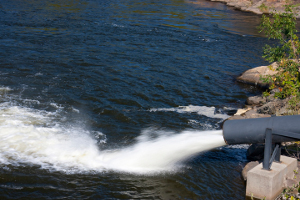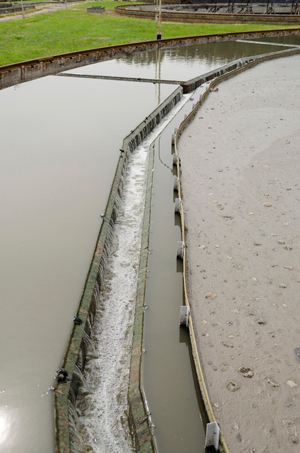
With the drought continuing into another year and a thirsty population poised to outgrow finite resources,
water providers are turning to a source you might not expect.
Texas’ population is expected to double to nearly 50 million in the coming decades, and officials are weighing
a variety of means to quench that mighty thirst. Among the ideas being considered are some that are novel, such as seeding clouds with chemicals to increase rainfall,
and others that are costly, such as building plants to treat salty sea water from the Gulf of Mexico.
However, one idea is getting a lot of attention from cities and other water providers around the state:
reusing treated wastewater or effluent also called return flows. For some, there might be a gross-out factor when considering the possibility. However,
you might not realize that effluent already has long been a part of the water supply across much of the state – indirectly.
When wastewater passes through a sewage plant it undergoes a rigorous treatment process, where solids are removed,
odor is reduced dramatically and harmful microorganisms are killed. When the final product is deemed safe for the environment it is released into streams, where it
is further treated by ultraviolet light from the sun. It mixes with water already in the environment, and some of it makes its way downstream to water treatment plants
to rejoin the public water supply.
Effluent reuse is a major part of the 2012 State Water Plan. According to the Texas Water Development Board,
regional water planning groups estimate that existing supply from water reuse is projected to produce about 614,000 acre-feet of water per year by 2060. That
number would jump to about 1.5 million acre-feet if all reuse recommended in the State Water Plan is implemented. This would average up to about 10 percent of all new supplies.

One North Texas city recently generated dramatic news headlines when officials announced they were considering a more
direct reuse of effluent. Last year the city of Wichita Falls built a 63,000-foot-long pipeline connecting its water and wastewater treatment plants, with the goal of adding
5 million gallons a day to the water supply. This will be no small improvement for the city of more than 100,000. After more than two years of drought, Wichita Falls’ main water
supply, Lake Arrowhead, was down to about 23 percent of its capacity and the city was under a Stage 5 Drought Catastrophe under its drought contingency plan at the beginning of June.
City officials have sought to ease concern about the reuse of effluent. On their website they highlight the several-step treatment
process before the effluent will join the public potable water supply. You can find that and more information here. Currently the process is being tested and the results will be sent
to the Texas Commission for Environmental Quality to approve before this added source of water is allowed into the public water supply, officials say.
Many cities in the Brazos River basin, and across the state, have already been using effluent in other ways, such
as watering landscape, cooling power generation plants and to meet other non-drinking water needs. This takes pressure off public water supply systems by reducing
the amount of treated drinking water used for such projects.
For instance, within the Brazos River basin, Lubbock and Abilene use effluent to water grasses and other vegetation in roadway
medians as well as local golf courses. The city of Cleburne provides about 2 million gallons of treated wastewater to industrial customers each day. In the Waco area, effluent
is used in part to help operate a nearby power generation plant. The list goes on and on.
However it is used, effluent will certainly continue to be a part of Texas’ water supply. As bad as it is,
history has shown us that drought conditions do end. The reservoirs will fill and the immediate strain on our water supply will ease. But as long
as our population continues to grow, the need for water is going to increase, and innovative strategies such as wastewater reuse will play a vital role far
into the future.
